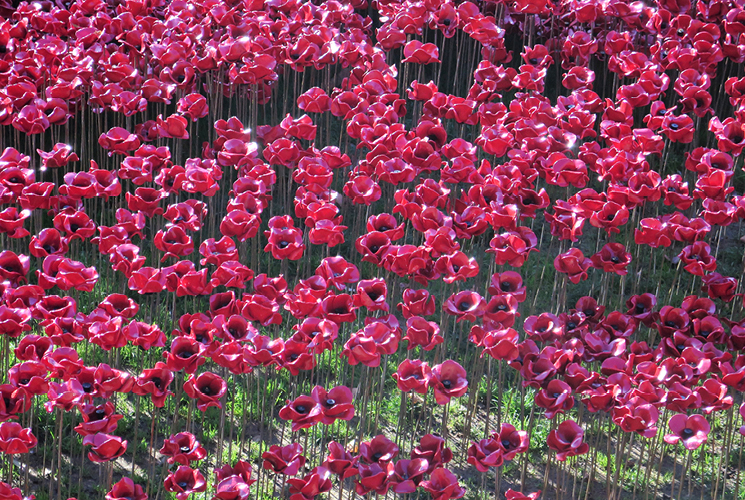Engaging with Remembrance Day in art and design
09 November 2023
Karl Goodere-Dale, Art and Design Subject Advisor

As an ex-art teacher, I have always believed that art has the power to surpass time and language, allowing us to express complex emotions and pay homage to important moments in history. Remembrance Day is one such moment that calls for reflection, gratitude, and the honouring of those who sacrificed their lives in wars and conflicts.
In this blog, I would like to explore the connection between art and Remembrance Day, as well as share some meaningful art projects that can help students of all ages engage with this solemn occasion in a creative and thoughtful way.
The power of art in remembering
Art has a unique ability to capture the essence of a moment, to express feelings that words alone cannot convey, and to create a lasting visual memory. When it comes to Remembrance Day, art can serve as a powerful tool for honouring the sacrifices made by veterans, as well as for educating and engaging students and the wider community.
Typography and calligraphy
Words have a deep impact on our emotions and understanding of history. Encourage your students to explore art typography and calligraphy to create Remembrance Day-themed works. They can use extracts from famous war poems, such as:
“In Flanders Fields” by John McCrae
“Dulce et Decorum Est” by Wilfred Owen
“The Soldier” by Rupert Brooke
“War Girls” by Jessie Pope
Combining these poem verses with beautiful calligraphy and illustrations can create a moving piece of art that pays homage to those who served, whilst reinforcing cross-curricular links.
Poppy art
The red poppy has become a symbol of remembrance and is often worn to commemorate veterans. Research artists’ work like the major art installation Blood Swept Lands and Seas of Red at the Tower of London.

Poppies from ‘Blood Swept Lands and Seas of Red’
Then have your students create poppy-themed artwork using various mediums, such as watercolours, acrylics, or even collage. Discuss the significance of the poppy as a symbol and its origins in the fields of Flanders during World War I. Encourage students to explore the various textures and shades of red to create visually striking poppy images.
Collage of memories
Remembrance Day is not just about honouring those who served but also about recognising the broader historical context. Ask your students to create collages that incorporate elements from different eras, such as war posters, newspaper clippings, and photographs. This can help them gain a deeper understanding of the impact of war on society.
Peace art
While Remembrance Day is rooted in the memory of war, it is also a day to reflect on the importance of peace and reconciliation. Encourage your students to consider creating art that embodies the spirit of peace and unity. This can be expressed through images of doves, olive branches, or symbols of international cooperation. These artworks, like some works by Banksy including “CND Soldiers”, can serve as a reminder of the ultimate goal – a world without war.

‘CND Soldiers’ by Banksy
Conclusion
Art is a medium that bridges the gap between the past and the present, allowing us to remember and reflect on the sacrifices made by veterans. I believe it is crucial to provide our students with the tools and opportunities to engage with Remembrance Day in a meaningful way. Through poetry, poppies, portraiture, collages, and peace-themed artwork, students can express their gratitude, respect, and empathy for those who have served and continue to serve our nations.
By encouraging our students to create art linked to Remembrance Day, we not only foster their artistic skills but also instil in them the importance of remembrance, empathy, and the pursuit of peace.
Art has the power to transcend time and serve as a lasting tribute to those who have given so much for our freedom and the hope of a better world. Let us remember and honour their sacrifices and through the beauty and creativity of art, consider those individuals who find themselves currently caught in the middle of conflict, in particular, those involved in the Russia-Ukraine and Israel-Gaza wars.
Stay connected
Share your thoughts in the comments below. If you have any questions, you can email us at art&design@ocr.org.uk or tweet us @OCR_ArtDesign. You can also sign up to subject updates and receive email information about resources and support.
About the author
Before joining OCR in September 2019, Karl taught creative subjects in both art and design technology for 12 years. With experience with a variety of roles in secondary schools, including as a head of department, he has a wealth of knowledge and experience in teaching creative subjects at GCSE, A Level and BTEC. He has also previously worked as one of our examiners.